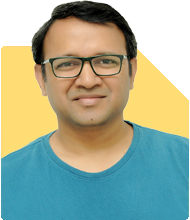Ramalingam Kalirajan |8600 Answers |Ask -Follow
Mutual Funds, Financial Planning Expert - Answered on Jul 04, 2024
He has an MBA in finance from the University of Madras and is a certified financial planner.
He is the director and chief financial planner at Holistic Investment, a Chennai-based firm that offers financial planning and wealth management advice.... more

I have an SIP in MF of 15k per month. Want to invest more 3k should i consider momentum fund
Understanding Your Current Investments
You already have an SIP of Rs 15k per month in mutual funds. This is a great start. Now, you want to invest an additional Rs 3k per month. Let’s evaluate your options and make sure you get the best returns for your hard-earned money.
Assessing Momentum Funds
Momentum funds invest in stocks that have shown upward price movement. They rely on the theory that stocks with high returns in the past will continue to perform well. However, this approach has its challenges.
Disadvantages of Momentum Funds
High Risk: These funds can be very volatile.
Market Timing: Success depends heavily on precise market timing.
Short-Term Focus: They often focus on short-term gains rather than long-term stability.
Management Costs: These funds may have higher costs due to frequent trading.
Given these factors, momentum funds might not be the best choice for everyone.
Benefits of Diversified Equity Funds
Instead, consider diversified equity funds. These funds invest across various sectors and market capitalizations, reducing risk and potentially offering better long-term returns.
Advantages of Diversified Equity Funds
Risk Reduction: Spreading investments across sectors mitigates risk.
Stable Returns: Less volatility compared to sector-specific or momentum funds.
Long-Term Growth: Ideal for long-term wealth accumulation.
Professional Management: Managed by experts who make informed decisions.
Consulting a Certified Financial Planner (CFP)
To make the most informed decision, consulting a CFP is highly recommended. A CFP can:
Assess Your Risk Profile: Understand your risk tolerance and investment goals.
Suggest Suitable Funds: Recommend funds that align with your financial objectives.
Provide Ongoing Guidance: Offer continuous monitoring and rebalancing of your portfolio.
Suggested Categories for Additional Investment
Here are some categories you might consider for your additional Rs 3k investment:
Large-Cap Funds
Investing in large, well-established companies provides stability and consistent returns. These companies have a proven track record and can withstand market volatility better than smaller companies.
Mid-Cap Funds
Mid-cap funds invest in medium-sized companies that have the potential for high growth. While they are riskier than large-cap funds, they offer higher return potential.
Multi-Cap Funds
These funds invest across large, mid, and small-cap stocks, offering a balanced approach. They provide diversification and can adapt to market conditions by shifting allocations.
Power of Compounding
One of the greatest advantages of long-term investments is the power of compounding. Compounding allows you to earn returns not only on your initial investment but also on the returns that investment generates. Over time, this can lead to exponential growth in your wealth.
Regular Monitoring and Rebalancing
Investments are not a one-time decision. Regular monitoring and rebalancing are crucial. Markets change, and so do your financial goals and risk tolerance. A CFP can help ensure your portfolio remains aligned with your objectives.
Final Insights
You have taken a commendable step by starting an SIP of Rs 15k per month. Adding an additional Rs 3k per month is a wise decision. Rather than opting for high-risk momentum funds, consider diversified equity funds for long-term stability and growth. Consulting a CFP will provide you with personalized advice tailored to your financial goals and risk tolerance.
Investing in diversified equity funds, guided by a CFP, ensures your investments are managed professionally. This helps in achieving better returns and aligning your investments with your financial goals. Remember, the key to successful investing is consistency, patience, and regular monitoring.
Best Regards,
K. Ramalingam, MBA, CFP,
Chief Financial Planner,
www.holisticinvestment.in
You may like to see similar questions and answers below
Omkeshwar Singh | Answer |Ask -Follow
Head, Rank MF - Answered on Nov 03, 2022
Ramalingam Kalirajan |8600 Answers |Ask -Follow
Mutual Funds, Financial Planning Expert - Answered on May 20, 2024
Milind Vadjikar |1238 Answers |Ask -Follow
Insurance, Stocks, MF, PF Expert - Answered on Oct 27, 2024
Ramalingam Kalirajan |8600 Answers |Ask -Follow
Mutual Funds, Financial Planning Expert - Answered on Oct 28, 2024
Ramalingam Kalirajan |8600 Answers |Ask -Follow
Mutual Funds, Financial Planning Expert - Answered on Nov 02, 2024
Patrick Dsouza |1082 Answers |Ask -Follow
CAT, XAT, CMAT, CET Expert - Answered on May 29, 2025
Patrick Dsouza |1082 Answers |Ask -Follow
CAT, XAT, CMAT, CET Expert - Answered on May 29, 2025
Patrick Dsouza |1082 Answers |Ask -Follow
CAT, XAT, CMAT, CET Expert - Answered on May 29, 2025
Patrick Dsouza |1082 Answers |Ask -Follow
CAT, XAT, CMAT, CET Expert - Answered on May 29, 2025
Patrick Dsouza |1082 Answers |Ask -Follow
CAT, XAT, CMAT, CET Expert - Answered on May 29, 2025
Patrick Dsouza |1082 Answers |Ask -Follow
CAT, XAT, CMAT, CET Expert - Answered on May 29, 2025
Patrick Dsouza |1082 Answers |Ask -Follow
CAT, XAT, CMAT, CET Expert - Answered on May 29, 2025
Radheshyam Zanwar |2524 Answers |Ask -Follow
MHT-CET, IIT-JEE, NEET-UG Expert - Answered on May 29, 2025
Radheshyam Zanwar |2524 Answers |Ask -Follow
MHT-CET, IIT-JEE, NEET-UG Expert - Answered on May 29, 2025

Keep hopes alive and participate actively in the counseling process.
Best of luck to you.
Follow me if you like the reply. Thanks
Radheshyam
Radheshyam Zanwar |2524 Answers |Ask -Follow
MHT-CET, IIT-JEE, NEET-UG Expert - Answered on May 29, 2025






















